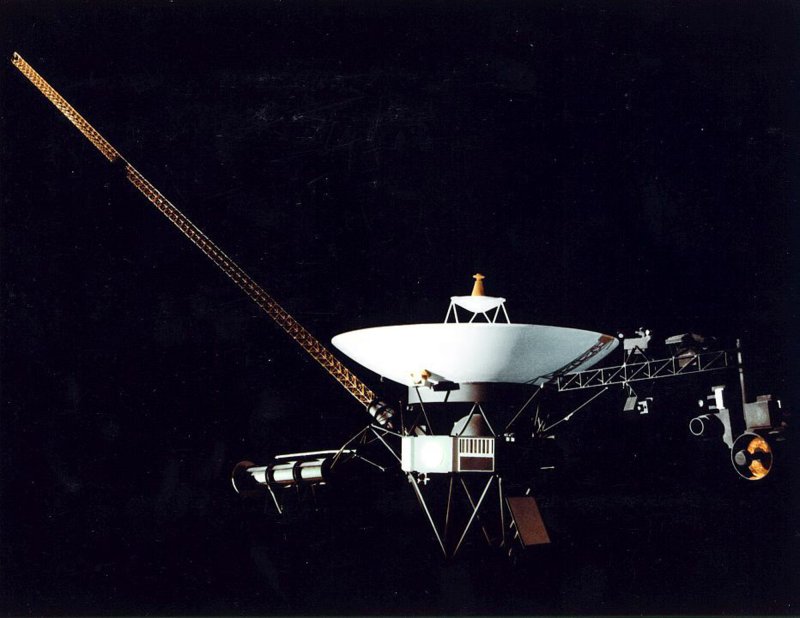NASA's Voyager 1 interstellar spacecraft. (Creidt: NASA) |
License Photo
Voyager 1 actually left the solar system last year, one new study suggests, contradicting the findings of NASA mission scientists.
"It's a somewhat controversial view, but we think Voyager [1] has finally left the solar system, and is truly beginning its travels through the Milky Way," lead author Marc Swisdak of the University of Maryland said in a statement.
Swisdak and co-authors from Boston University are not NASA mission scientists, and have published their findings in the Astrophysical Journal Letters.
Currently the Voyager spacecraft is about 11.6 billion miles from Earth, making it the farthest-reaching man-made object in space. Voyager mission scientists believe the probe is in a transition zone right at the edge of the heliosphere, or the area of the sun's influence.
But researchers say that magnetic reconnection -- the breaking and rejoining of magnetic field lines -- creates a "porous, layered heliopause" with nested "magnetic islands" in the outer solar system, creating a region of mixed interstellar and solar material near the edge of the heliosphere.
Swisdak and his team suggest the probe reached interstellar space on July 27, 2012.
But NASA scientists don't believe the probe has yet left the heliosphere, because it hasn't detected any shift in the direction of the ambient magnetic field.
Voyager mission chief scientist Ed Stone, a physicist at the California Institute of Technology, said he and his team will keep the new model in mind as they continue to study the data Voyager 1 beams home.
"Their model would mean that the interstellar magnetic field direction is the same as that which originates from our sun," Stone said in statement. "Other models envision the interstellar magnetic field draped around our solar bubble and predict that the direction of the interstellar magnetic field is different from the solar magnetic field inside. By that interpretation, Voyager 1 would still be inside our solar bubble."
"The Voyager 1 spacecraft is exploring a region no spacecraft has ever been to before," Stone added. "We will continue to look for any further developments over the coming months and years as Voyager explores an uncharted frontier."















